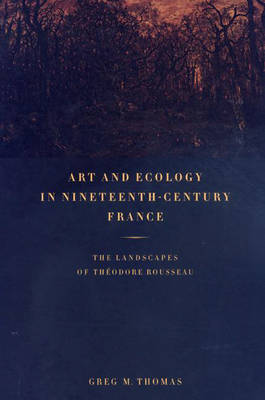In "Art and Ecology in Nineteenth-Century France", Greg Thomas sets forth a new ecological model of landscape painting, in which the process of art is seen to mimic the creative processes silently at work in the environment around us. Developing an aesthetics of place with implications for the entirety of nineteenth-century art, Thomas focuses specifically and with engaging exactitude on the landscapes of Barbizon painter Theodore Rousseau. These paintings - dreams of nature as a web of life in which human beings occupy a peripheral role - overwhelmed Rousseau's contemporaries with their novel light effects, original perspective, and 'sheer profusion of visual sensation'.While Baudelaire considered them superior to even Corot's works, they baffled art critics and have never fit convincingly into the received categories of naturalism, 'pre-Impressionism,' or modernism. Surveying Rousseau's whole career and presenting the first English translations of his writings, Thomas analyzes the artist's political beliefs and record as a pioneer conservationist. He also traces alterations in a number of the French sites that Rousseau depicted, most notably the royal forest of Fontainebleau.Through an interdisciplinary approach, the author reinterprets Rousseau's paintings as embodiments of a new way of seeing the world, a new sense of the deep interconnectedness between the human and natural worlds that coincided with the earliest formulations of modern ecological thought.
With over eighty illustrations, "Art and Ecology in Nineteenth-Century France" offers readers the considerable pleasure of rediscovering one of the most important and most neglected painters of the nineteenth century.
- ISBN10 0691059462
- ISBN13 9780691059464
- Publish Date 21 May 2000
- Publish Status Out of Print
- Out of Print 17 March 2015
- Publish Country US
- Imprint Princeton University Press
- Format Hardcover
- Pages 288
- Language English
- URL https://press.princeton.edu/titles/6815.html
